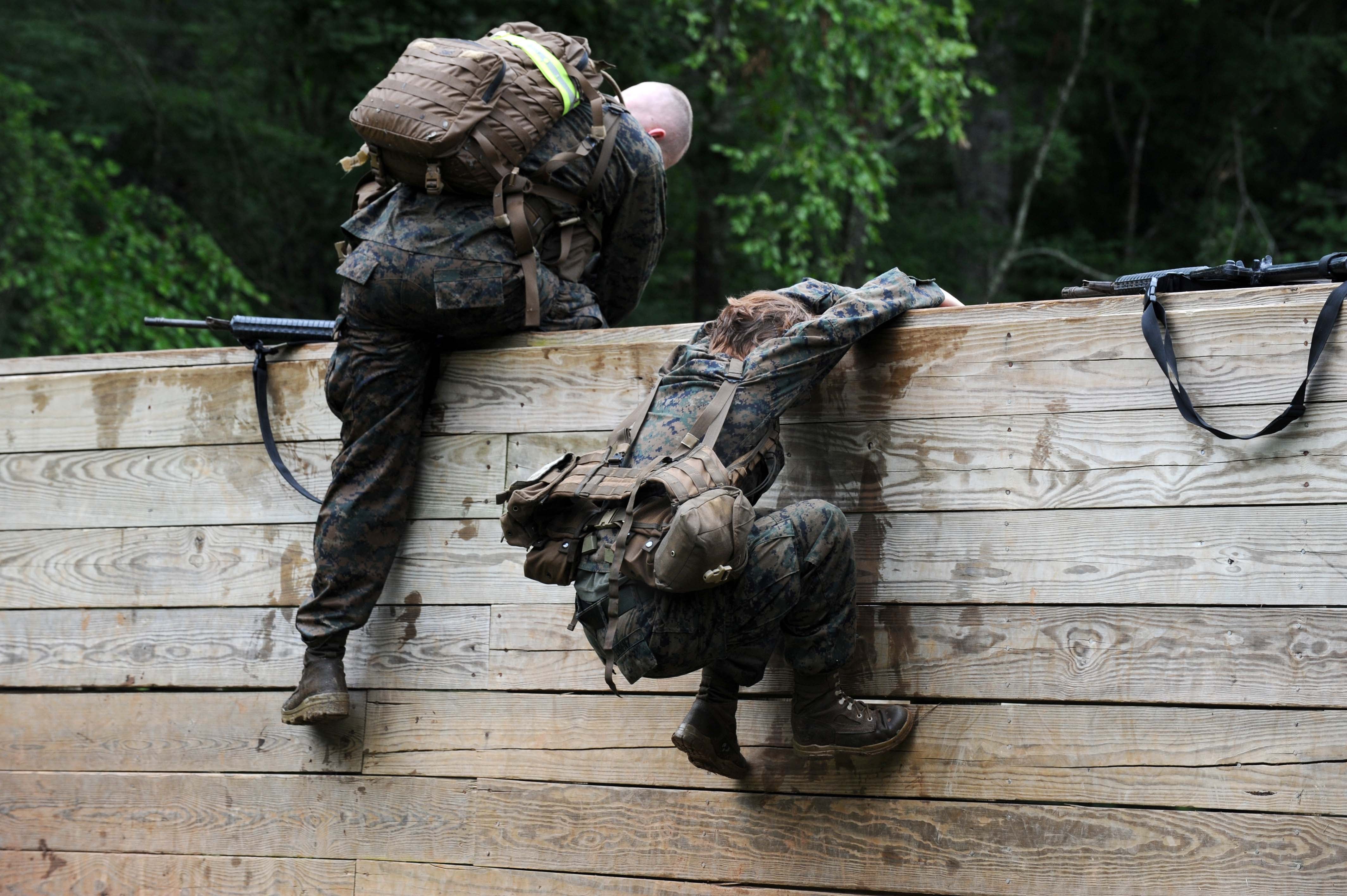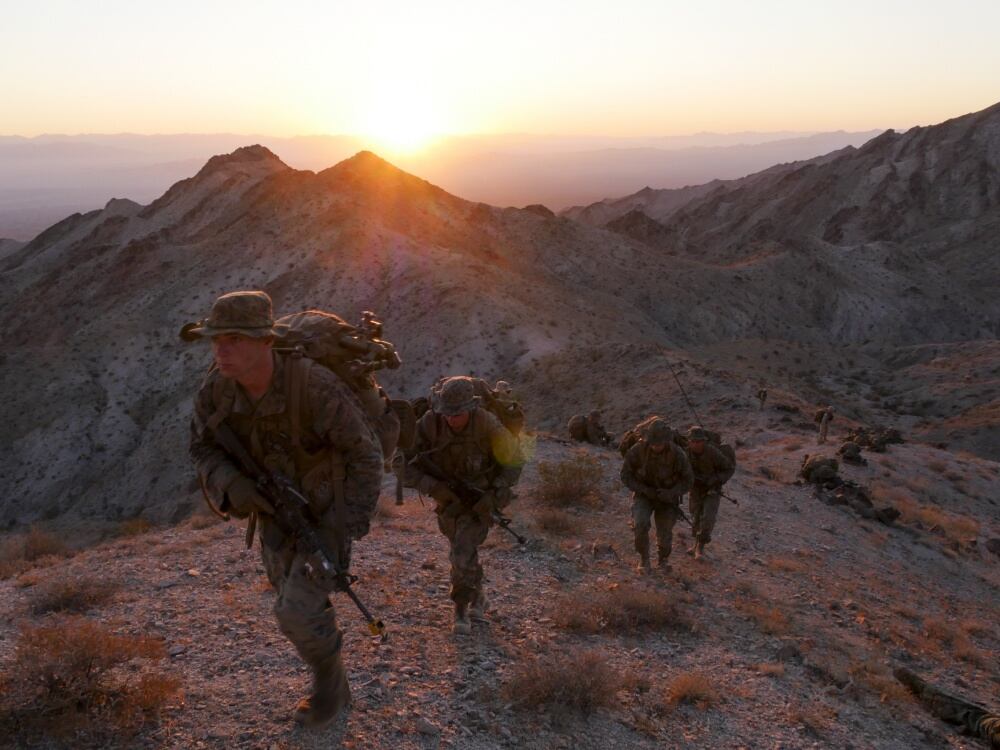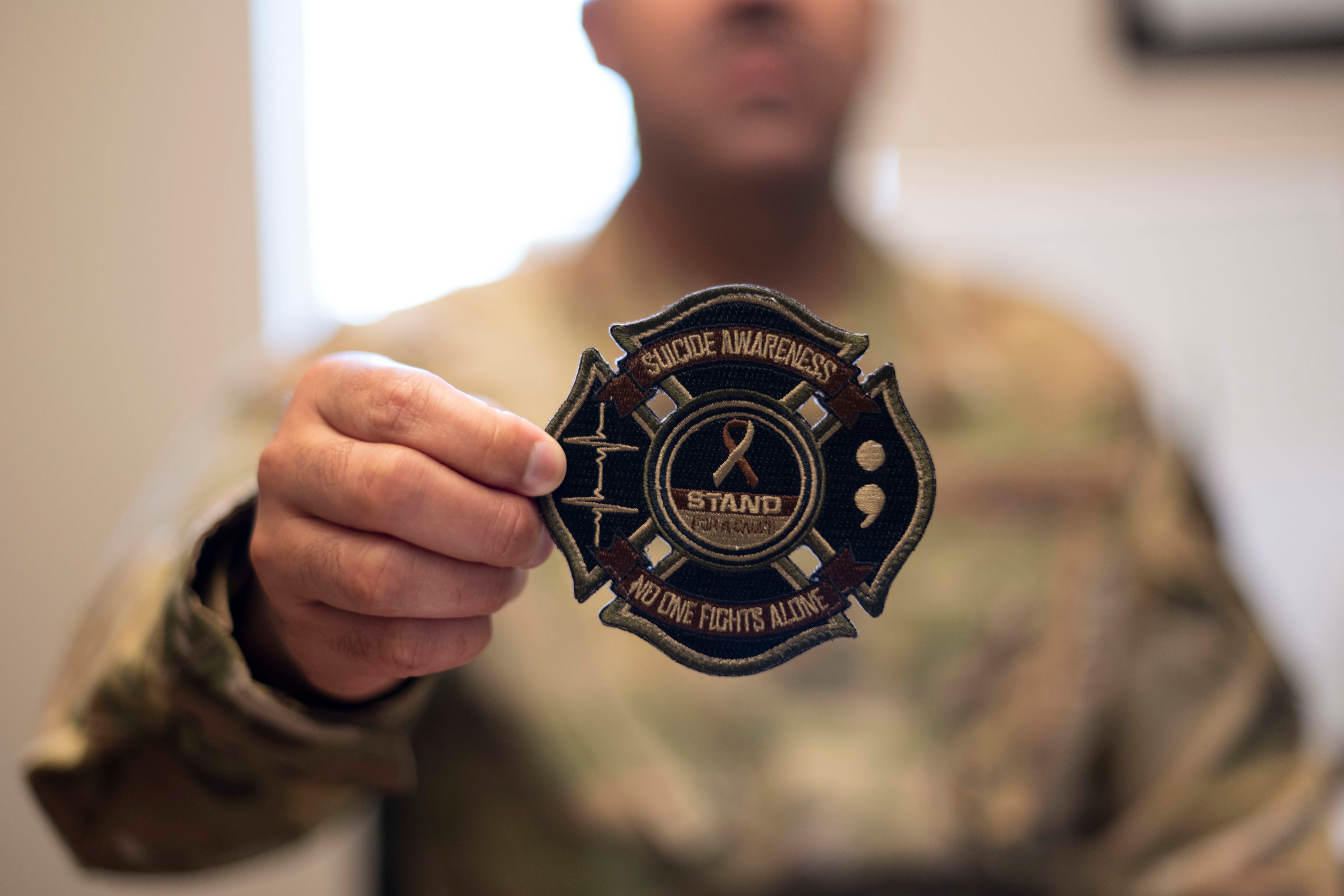The Corps’ 13-week Infantry Officer Course, or IOC, has a reputation of being one of the most physically demanding courses in the Marines. Only two women have thus far successfully navigated the school.
But, despite the low graduation rate among female candidates at IOC, their male colleagues have had far more injuries over the past two years.
From June 2016 until June 2018, there were 41 reported injuries at IOC, but only one was a female Marine who sustained a bruised rib, according to data obtained by Marine Corps Times through a Freedom of Information Act request.
The injury rates further question a controversial study pushed by the Marine Corps in 2015 that highlighted that mixed gendered grunt squads underperformed male teams. That study also suggested female Marines might sustain higher injury rates in the infantry.
The results shed some light on the otherwise tight-lipped school that has been spotlighted in recent years over what some activist groups have perceived as unfair standards and practices that have stymied female success at the Marine schoolhouse.
As a matter of perspective, 18 women have graduated from the Army’s elite Ranger School, according to Army Times.

However, the data is less than a perfect representation of injury rates along gender lines at IOC.
Few women have even attempted the IOC course.
As of June 2018, roughly 38 women have attempted IOC, about eight have attended since the job field was open to women, and thus far, only two have graduated.
Marine Corps Times had requested nearly 10 years of data to more than adequately cover the time span women have been allowed to attend IOC.
But Marine officials said IOC only maintains data spanning two years. This means much of the data pertaining to the first group of female Marines to enter IOC is unavailable.
By April 2015, 29 women had already failed IOC as part of the Corps’ initial integration study, putting the data obtained by Marine Corps Times outside this important time period.
The data also doesn’t adequately cover injuries that may have been sustained prior to recent changes to hikes and graduation requirements implemented at IOC. Changes that may have been made to boost graduation rates but also reduce injuries at the school.
RELATED

The Corps removed the Combat Endurance Test as a strict graduation requirement, lowered the number of evaluated hikes to pass IOC to three, and added a new primer course at The Basic School to better prepare incoming IOC candidates.
Participation in all nine hikes at IOC is still a requirement, the Corps merely changed which hikes are evaluated. And poor performance in any event can still be used to fail a candidate.
Marine officials contend those changes were implemented to reduce attrition rates, which soared as high as 25 percent in 2014, and to properly align the curriculum to actual standards outlined in the infantry training and readiness manual.
But the Corps also found “that the standards that were implemented at IOC were done by a local commander, you know based on his experience, but we’re breaking people ... we were putting 150-160 pounds on Marines and breaking them at a very young age,” Lt. Gen. Michael G. Dana, the deputy commandant of Marine Corps Installations and Logistics, said to lawmakers in March at a readiness hearing.
Overall the biggest injury cases at IOC were 15 stress fractures of the feet, five sprains and four shoulder injuries. There were also a couple of broken feet and dislocated knees.
As a testament to the grueling nature of IOC, there were also two reported cases of rhabdomyolysis and a case of hyponatremia.
Rhabdomyolysis is a rare condition where muscle fibers break down into the bloodstream. This can happen from extreme overworking of the muscles either from someone who is out of shape and ill prepared for a physical routine, or from elite athletes who push too hard on their workouts.
The condition can result in kidney failure or death.
Hyponatremia is a result of abnormally low levels of sodium in the bloodstream that can result in muscle spasms, seizure, or coma. There are numerous causes for hyponatremia, but one of them is drinking too much water due to an intense workout.
But out of all these injuries, only one bruised rib was sustained by a female Marine at IOC.

Moreover, the Corps says none of the injuries over the two-year period resulted in a medical or administrative separation.
But, over the past ten years, two Marines were medically separated for IOC-related injuries, one in 2011 and another in 2015, according to data pulled by the Marine Corps Total Force System.
Shawn Snow is the senior reporter for Marine Corps Times and a Marine Corps veteran.





